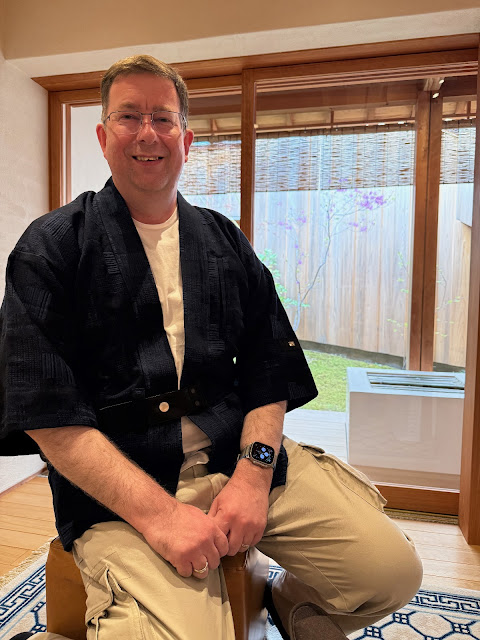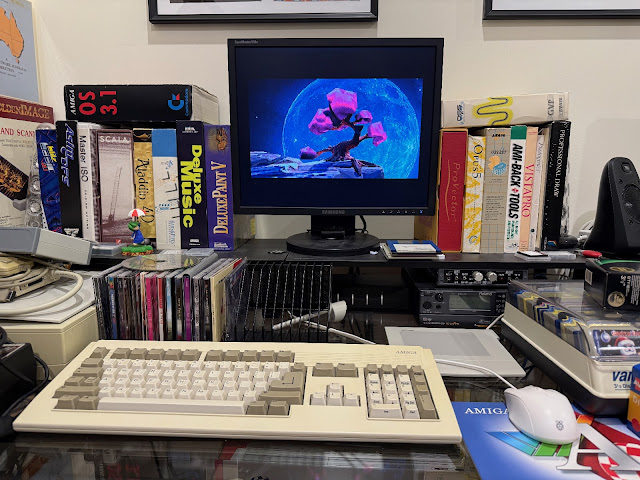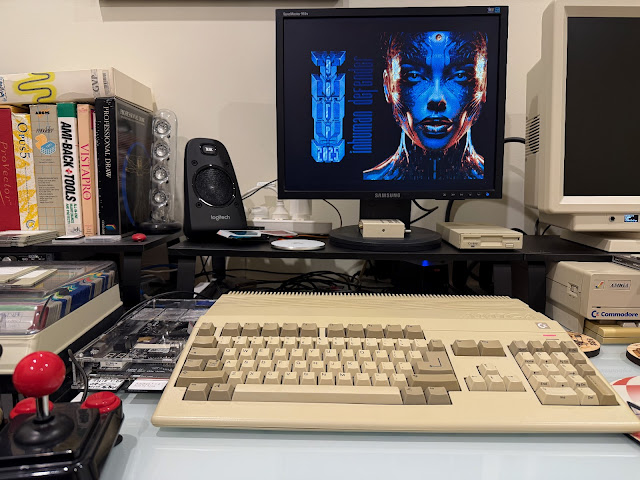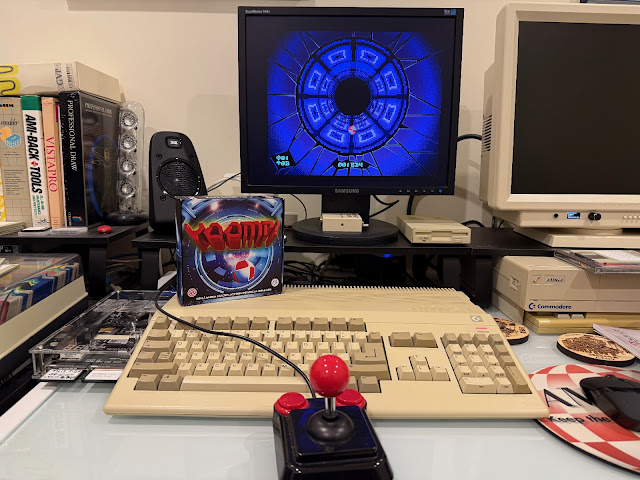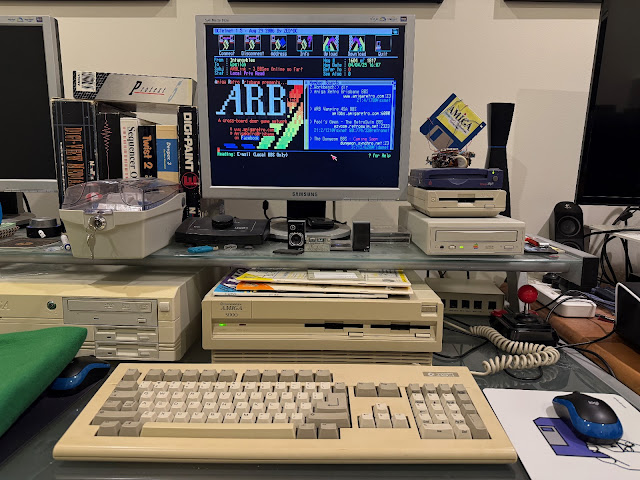Update and small Sony ES amplifier build tribute
Thank you for your patience during my extended absence from this blog.
I hope you understand that this past 2 months since the sudden and unexpected death of my younger brother has been an incredibly tough time for me personally and my family. I have had a lot to deal with, and it has been hard. Really hard.
I got away from things for two weeks to Japan in April, for a trip already pre-arranged almost a year ago.
This trip was to enjoy the Sakura (cherry blossom) season, attend the Japanese F1 Grand Prix, explore Japan by train a bit more, and see my wife's family and our friends in Japan.
Here I was on a boat cruise in Kyoto enjoying the Cherry blossoms in full bloom:
The Japan trip was badly needed and I was really glad for the time off.
Perhaps another time I will do a post about the great trains I travelled on and experiences while there, but that is not the focus of this post.
Coming back home, I arranged the funeral for my younger brother. He was with the coroner for a number of weeks for police investigation and autopsy. The police told me to take my planned Japan trip as nothing would happen in between - it was the right decision.
I needed to return to work also, and I did what I needed to do, but the emotions were so raw, and the whole situation so difficult to accept. Organising the funeral while working full time almost broke me mentally.
I enjoyed the Yoomp! game released as a physical game release on Amiga - I bought it ages ago but finally got around to trying it:
Also did a bit of BBS Crash door game action with the Amiga Retro Brisbane group BBS from my Amiga 3000:
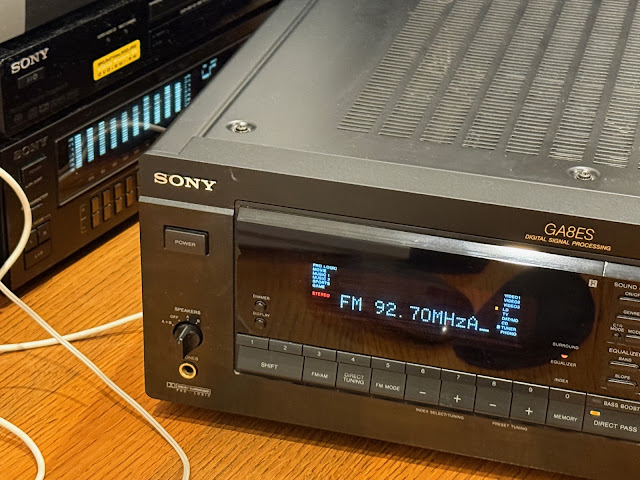
As my small tribute to him, I decided to get his ES amplifier setup in my home with some suitable components and connected to my main computer and consoles too. That way I would use it every day, a reminder of him every day.
I am listening to it now as I write this blog post.
Sony used to make Elevated Standard (ES) versions of their component hifi systems, including Amplifiers, Tuners, tape decks, Minidisc decks, DAT tape decks, CD players, DVD players, and many others too.
The ES series are considered the best of what Sony made back in the "glory years" of the 1980's and 1990's when Sony used to make so many great products for consumers, audiophiles and professional equipment too. They were highly desirable then, but few could afford them - I certainly couldn't!
These days they are still valuable as second hand devices, simply because of the rarity of them, and their features.
Sony in 2025 (with a few exceptions of their Bravia high end OLED TV's, Walkman and ZR1/XM6 headphones) is sadly a pale shadow of what it was for consumer electronics. I know they still make a ES HDMI amplifier with Airplay for modern 4K TV setups, and premium ES car speakers, but that sadly is pretty much all that is left of the ES line today.
It seems people nowadays prefer small, compact audio systems, using soundbars, airplay, wireless speakers and app control replacing the remotes, dials and buttons of the past. We can stream unlimited music and video wirelessly from our smartphones with no constraints. We don't need tapes, cd's, minidiscs, records, dvd's or blu ray discs anymore.
Technology is always moving forward, but here I think we lost something along the way. Modern audio devices are bland and boring to look at, and people miss the tactile and analog experience of playing physical media.
It's not just older people either, look at the popularity of vinyl records in stores nowadays - they outsell CD's in 2025 and it's mostly young people buying them playing them on bluetooth enabled record players!
Sony used to pack ES hifi component decks with many additional higher end features, screen displays and functions to differentiate them from the cheaper versions - the more fancy displays, buttons and inputs the better!

I can imagine for young people, the rear view below of this Sony GA89ES Amplifier would be scary - so many inputs and outputs with so many different connection types. No bluetooth and no HDMI!

It didn't come with the remote control or manual, but luckily I was able to get the manual online from Sony themselves to find out the remote control model number, and then found the remote on Ebay from Canada of all places.

I was on the lookout for new speakers, DVD player, graphics equalizer/sequencer and minidisc deck to complete my setup, but I was keen to get started! So I used my existing Bose lifestyle speaker set and amp initially to get what I had set up and working.
I used one of the HDMI inputs on the Checkmate monitor to feed in my HDMI switcher box connected to the PlayStation 4 and Nintendo Switch 1. I used the audio out connector on it to feed the audio to the ES amplifier given it has no HDMI inputs or pass through.

Having got this working, I found and bought the next two pieces of the system, a Sony DVD QS player, and a Sony SEQ-333ES Graphic Equalizer. I set to work installing them.
Connecting the Sony Equalizer to the final speaker setup was much trickier than I expected, but more on that later.
I LOVE this Sony Equalizer. It was not a cheap purchase, but they are rare in Australia, and I can't resist a cool looking piece of kit like this. It suits this set up perfectly in my opinion.
I tested it with the DVD first, and then the LaserDisc also, playing INXS's live baby live concert video:
With the setup so far working well, I turned my attention to the speakers. I needed to buy new speakers to use with the ES amplifier and to remove the Bose setup.
I am sure someone will point out these speakers are overkill for this system, and especially for my room which is only 4m x 4m.
I wired up the speakers using new speaker wire I bought. You would think for such expensive speakers they would include the cables, but no...
The sub woofer was quite large:
It has level and cut off knobs to adjust the volume level and where the cut off of bass happens, ie. how much wall vibrating you end up with...
Also, I wanted to connect my old iPod classic via its dock to the ES amplifier too. Because, why not!
Moving the monitor was important since I knew I was going to add a Minidisc deck to this setup to finish it. I had wanted to get an ES model Minidisc deck, but they are just so expensive.
The small size of the M3 Ultra series Silicon Mac systems compared to the old Intel Mac Pro tower is amazing. It has the same storage capacity and way faster multi-core CPU and GPU in a tiny fraction of the size.
Transferring the data between the system took ages - I have 14TB of data on the Mac Pro so...
It took over a day actually - I used a TFT screen with HDMI output from the old Mac Pro since the Mac Studio was using my main display.
The plan is to eventually to get back to streaming again when I have the time for it, so this is kind of pre-work for that!

